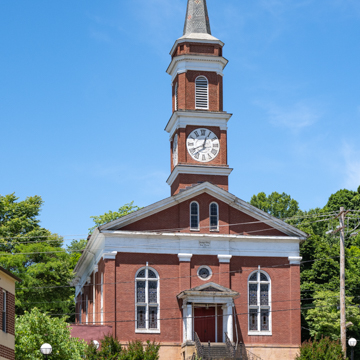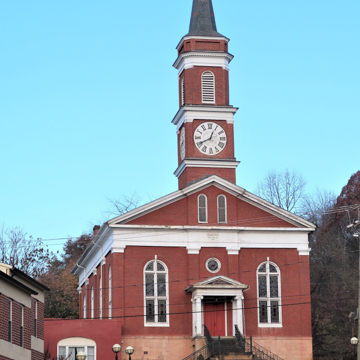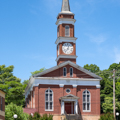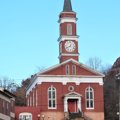This relatively austere, classical church was built by German Lutherans to accommodate the influx of German settlers to Cumberland during the mid-nineteenth century. Originally part of the St. Paul’s congregation, this group separated in order to maintain sermons in their native German. The town donated the land and offered a clock to the first of two German religious faiths competing to erect new edifices, lending the church its name. Legend has it that the Lutherans won because the women of the congregation provided torches to enable construction into the night. The church’s prominence within the city skyline is established by its hilltop location and soaring four-part tower that encompasses the clock, belfry, and spire. The church was designed by a member of the congregation. The interior comprises a narthex, nave, and raised chancel, with a balcony that features one of the oldest working Opus No. 36 Moller organs extant.
You are here
TOWN CLOCK CHURCH (GERMAN EVANGELICAL LUTHERAN CHURCH)
If SAH Archipedia has been useful to you, please consider supporting it.
SAH Archipedia tells the story of the United States through its buildings, landscapes, and cities. This freely available resource empowers the public with authoritative knowledge that deepens their understanding and appreciation of the built environment. But the Society of Architectural Historians, which created SAH Archipedia with University of Virginia Press, needs your support to maintain the high-caliber research, writing, photography, cartography, editing, design, and programming that make SAH Archipedia a trusted online resource available to all who value the history of place, heritage tourism, and learning.





